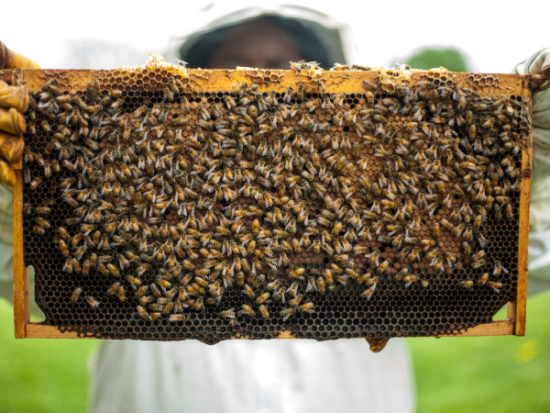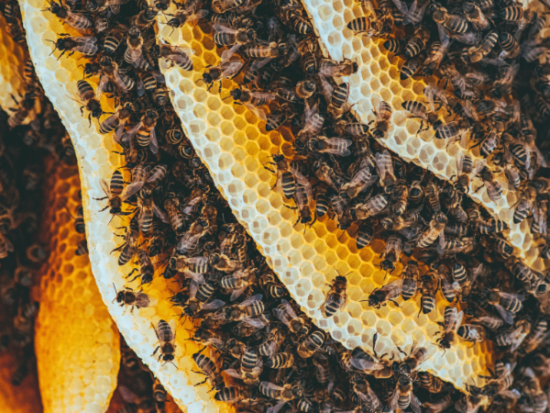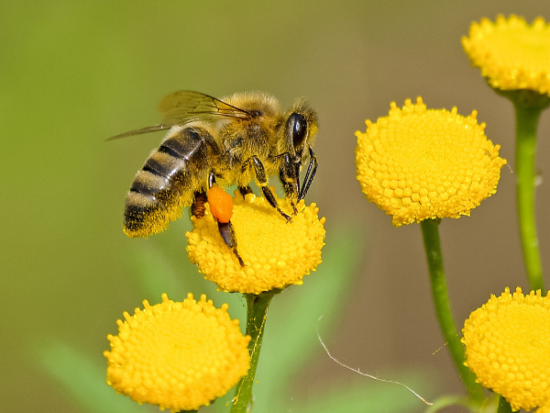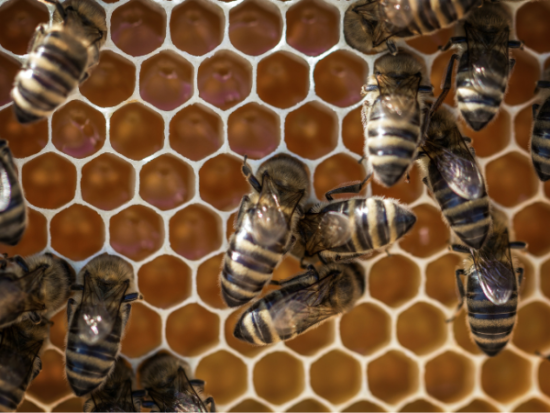How do bees make honey from nectar?
Do you ever find yourself wondering, how do bees make honey? If so, you’re not alone. Honey is an essential product produced by nature itself, and it is used as a sweetener in almost every household.
Since you’re contemplating this natural phenomenon or find yourself intrigued with the concept of honey being made, continue to read on to learn about the beauty of nature!
This process is a combination of several different steps. This process includes the collection of nectar from flowering plants and its conversion into high-sugar food.
How Do Bees Make Honey? Here’s How!

There are over 20,000 bee species and 4,000 native bee species in North America alone. In totality, there are three types. The first kind is the queen that is responsible for the reproduction process.
The second kind involves the drones (male bee), and the third is categorized as the workers (female bee) who are responsible for collecting the pollen and nectar. These three types are further segmented into different types of bees, such as carpenter bees, wild bees, bumblebees, etc.
Related Articles
Top 5 CBD Gummies on Amazon
How to Know if You Have a Pollen Allergy
10 Domestic and International Airlines To Fly
Each bee kind has a significant role to play, and their jobs are preassigned, each knowing what they have to do to fulfill their part of the job. This entire role play makes the production of honey smooth and efficient.
A flower, the origin source, carries two food sources for bees. One of them includes nectar and the second food source is pollen (from the anthers of flowers). A bee takes the nectar or carries pollen from a particular flower.
Honey production is a process that involves digestion and enzyme activity as well as evaporation. These fantastic flying creatures can carry nectar or pollen of their weight. They fly to the flowers and suck the nectar from them.
On average, these little creatures fly from 50 to 100 flowers a day to collect nectar. Nectar is a liquid secretion, rich in sugar, produced to attract pollination.
The Process
Bees inside their honey stomach then store the nectar. They may also transfer some part of the nectar into their food stomach by opening a valve in the sac to gain the energy they need.
They then return to their hive after the sac is full of nectar and start the process of passing around the nectar to other bees. Nectar is passed on to others through their mouths and is chewed by them for half an hour. This is where the enzymes take action.
The constant chewing and passing on of nectar convert the nectar into honey. This process is a long and difficult one. If only eight bees give their whole life in fundamental understanding. They could only make just a teaspoon of this nutritious, tasty liquid.
Since nectar is present in a highly liquid form, it is crucial to eliminate the water content as a high amount of water can cause the honey to become fermented.
Bees do this by flapping their wings until the moisture is eliminated or reduced to at least 18%, which initially is at 90%. However, this percentage can vary.
Related Article: 8 Best Uses for Vinegar
Bees being honey experts, are well aware of how mu the nectar needs to produce the ideal type. After being completely satisfied with the amount of moisture, the sugary liquid is sealed with beeswax. The seal becomes the source of identification for ripened honey.
Nectar is stored inside the honeycomb – A body of hexagonal wax cells before the process of passing on takes place as the temperature of the hive is high enough to evaporate some of the moisture.
While some bees have the duty of collecting nectar, others are busy gathering pollen, both being essential sources of energy for these fantastic little creatures.
Some of the pollen is in combination with the nectar to produce bread used to feed the larvae. Protein is an essential nutrient requirement for the younger ones to survive and grow and for the community to thrive.
Do Bees Make Honey from Pollen?
There is a misconception among many individuals regarding the use of pollen by bees. They collect pollen from the anthers of flowers, but they do not use it to create honey. Instead, they make it from the nectar that they contain.
Pollen, however, is also an important energy source for bees. While nectar too is an important source that prolongs the lives of these flying creatures, it alone cannot provide enough nutrition to raise new bees. Hence, pollen acts as the primary source of food.
Pollen is the only source of protein available for bees which is essential for their colony life. Pollen is also stored in a honeycomb. When the young ones start to age, the newly grown bees begin to replace them in the honey production process.
Related Article: Best Cleanse for a Healthier Body
Honey In Natural (Unprocessed) Form
Since honey consists of minimal moisture and high acidity, microorganisms find it challenging to reproduce and survive natural love. It is for this reason organic honey is not of pasteurization.
Many large retailers, on the contrary, prefer to pasteurize it so that the granulation process is slower, which increases the shelf-life of the honey.
However, this process results in a loss of natural pollen, beneficial vitamins, and enzymes, reducing the overall efficacy of the miraculous liquid.
Honey Production in Winter
You might be wondering how bees are working to make honey in winter. Well, honey production comes to a halt in winter. The sole reason for this is because the production of nectar and pollen ceases. In winters, the only concern that bees have is that of protecting their hives.
For this purpose, they wrap themselves around the beehives and vibrate their flight muscles to generate heat to survive. For the colony’s survival, the males are cast out of the hive, and scarce food is among the remaining bees.
Considering these little creatures working, and the saying’ busy as a bee’ starts to make sense. The forager bees start working when they turn 3-weeks old and continue to work actively for the rest of their lives, usually around six to seven weeks.
To Sum It Up
While we get honey readily available on our stores’ shelves, the dynamic process behind it is no easy undertaking. There are almost 40,000 bees in one hive, and approximately 450 grams of honey is of production in a time of 3 weeks.
Although honey is easy for us to purchase in places like the United States and is readily available, however, for bees, it’s ultimately the opposite – a life-consuming process.




